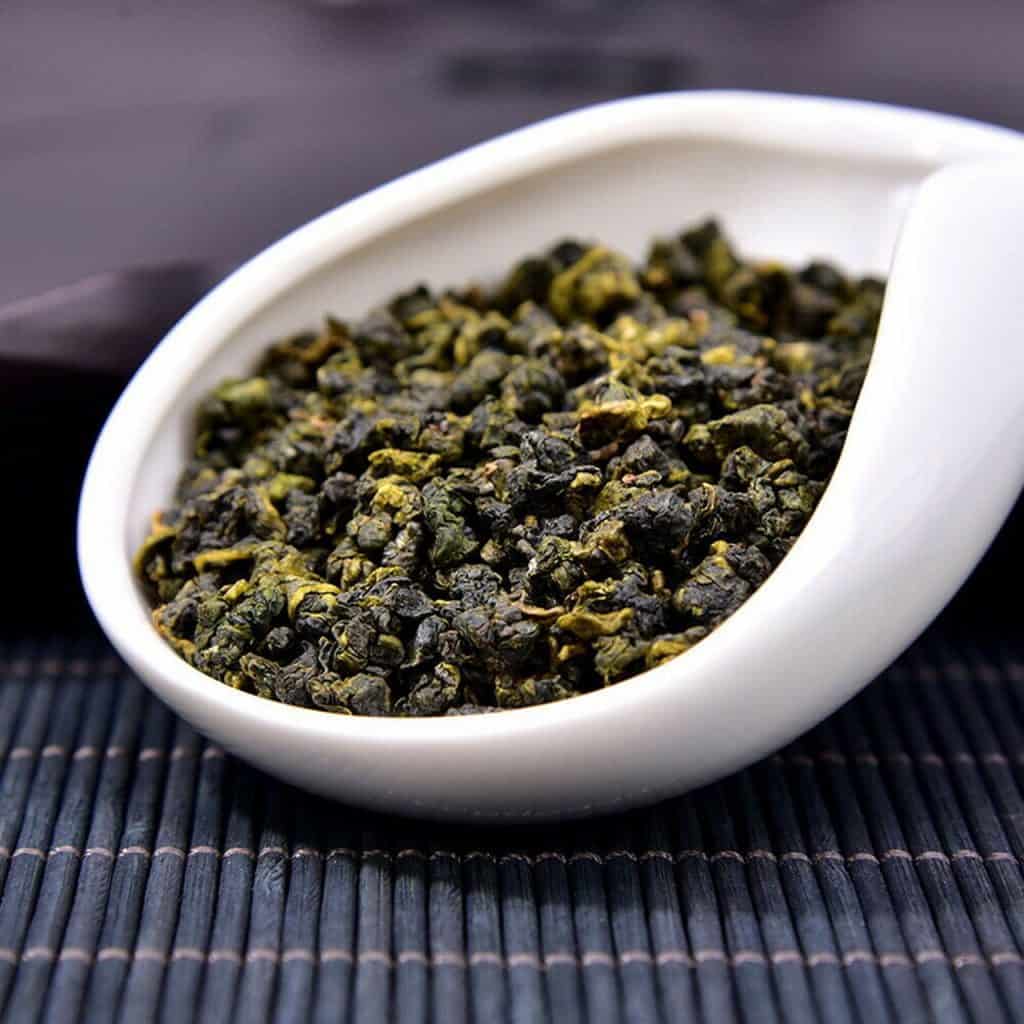Oolong tea is not as world-famous as green or black tea, but it has an equally respected place. Oolong tea benefits, flavors, and cultural significance have charmed tea drinkers everywhere.
The processing method allows tea masters to experiment with flavor combinations, without ruining the tea’s characteristics.
Here is everything you need to know about oolong tea, including its flavor profile, types, and why you should include it in your tea arsenal.
What Is Oolong Tea?

Oolong tea comes from the same Camellia sinensis plants like green or black tea. However, the processing method involves oxidization without fermentation, which gives it both the characteristics of green and black tea.
The word “oolong” came from wu-long (“black dragon”), referring to the large, dark, and twisted leaves after processing.
Oolong tea has been an important part of Chinese culture since the era of the Tang Dynasty (618—907 AD). The tea was famous as a “tribute drink,” where people drank it as a sign of respect and honor toward others.
Now, countries like Taiwan, Nepal, Sri Lanka, and even New Zealand produce their versions of oolong tea.
Oolong tea taste depends on the oxidation level. Leaves that grow through the light oxidization process offers light, refreshing flavor, with floral or fruity tones.
The heavily oxidized leaves offer a heavier and more robust flavor after brewing, with an earthy tone.
Does oolong tea have caffeine? Again, it depends on the oxidization level. The longer the process, the more caffeine the tea acquires. You must limit the consumption level of high-caffeine tea to one or two cups every day.
Popular Types of Oolong Tea

Different types of oolong tea offer unique flavor profiles. They depend on the soil, cultivation, and processing methods. Here are some of the most popular oolong tea types:
Iron Goddess of Mercy (Tie Guan Yin)

Originating from Fujian, Tie Guan Yin used to be an exclusive tea for emperors. Now, this is one of the most popular oolong tea types in China. This tea has a mild, refreshing flavor, with hints of honey and flowers.
High Mountain Tea (Gaoshan)

Gaoshan originates from the mountain range in Taiwan and consists of several products, like Wu She and Alishan. Farmers harvest the leaves every spring and winter.
When dried, the leaves emit floral aroma. This tea has a crisp, solid, almost buttery taste, with pine and floral hints.
Milk Oolong Tea (Jin Xuan)

Milk Oolong Tea comes from Taiwan, and famous for its buttery flavor, almost like milk. The tea comes from mountainous regions and gets its milky flavor naturally.
These famous tea types may come under various brands. Many of them are imported directly from the tea’s origin countries.
Most Recommended Oolong Tea Brands

Wanting to add oolong tea to your diet in 2019? Here are some of the best brands you can find online.
Tea Collective Alishan Oolong Tea

Tea Collective offers handpicked, loose leaf oolong tea from Taiwan. This tea has a mild flavor, with the signature Alishan floral notes. You can detect hints of orchids, rose, fruits, and vanilla in here.
Ten Ren Oolong Tea

Ten Ren is a Chinese brand that sells its products globally. The oolong tea is partially fermented and sold in practical bags. It has solid flavor, but not as strong as dark oolong. Perfect for a “wake up” drink.
Choice Organic Oolong Tea

This tea is produced in the US, but the tea leaves come from a tea plantation in Wuyuan Mountain, China. It comes in tea bags, with mild, mellow flavor perfect for first-time oolong drinkers.
Rishi Tea (Jade Oolong)

The Jade Oolong from Rishi Tea comes as loose dry leaves. The tea comes from the Mingjian Village in Taiwan. This brand is ideal for those who like a stronger tea flavor.
The tea is slightly bitter, but with pleasant notes of flowers and fruits.
All these tea products are available in online stores such as Amazon. You can experiment with different brands and tea packaging to get the perfect brew.
Benefits of Oolong Tea for Health

What is oolong tea good for? Before answering the question, you must know the active chemical compounds in this tea.
Oolong tea contains antioxidants like polyphenols. The tea also contains theanine, a chemical compound that creates a relaxing effect on your nerves.
These chemical compounds are responsible for several health benefits. Some examples are:
Protecting the Cardiovascular Health

The polyphenols in oolong tea may be responsible for reducing the risks of developing stroke and coronary heart disease. A study conducted to 76,000 Japanese people revealed that regular oolong tea drinkers have 61 percent of lower chance to develop heart problems.
Reducing Risks of Stress and Degenerative Diseases

The calming effect of oolong tea is perfect for reducing the negative effects of stress. Regular tea consumption may also reduce the risks of developing Alzheimer’s.
Improving Concentration and Focus

The caffeine in oolong tea can encourage the productions of dopamine and norepinephrine. These hormones are responsible for increasing brain functions, improving your focus and mood.
Helping with Diet

Drinking oolong tea for weight loss is connected to your body’s ability to burn fat. The combination of polyphenols and caffeine encourages the body’s enzymes to use more fat and produce energy.
To get the health benefits, you should drink unsweetened, high-quality oolong tea (preferably from loose leaves). Drink just one or two cups of tea per day, and make sure to eat first beforehand.
Oolong Tea Side Effects

There are several concerns about the excessive consumption of oolong tea. The caffeine level in heavily oxidized tea can cause insomnia, irregular heartbeats, and digestion problem.
If you have anxiety disorders, drinking oolong tea with high caffeine amounts may trigger your symptoms.
Oolong tea may have a connection to the weak bone problem because its mild diuretic effect can flush out calcium.
The tea may also slow down the blood clotting process, reducing the body’s ability to stop bleeding from the cut. The high caffeine level can also increase the risk of glaucoma, due to excessive pressure in the eyes.
Conclusion

Oolong tea sits between green and black tea when it comes to flavor and caffeine amount. The tea has a unique flavor and comes under various brands.
While it offers some benefits, there are also negative effects of excessive consumption. Enjoy your oolong tea benefits with some cautions.



